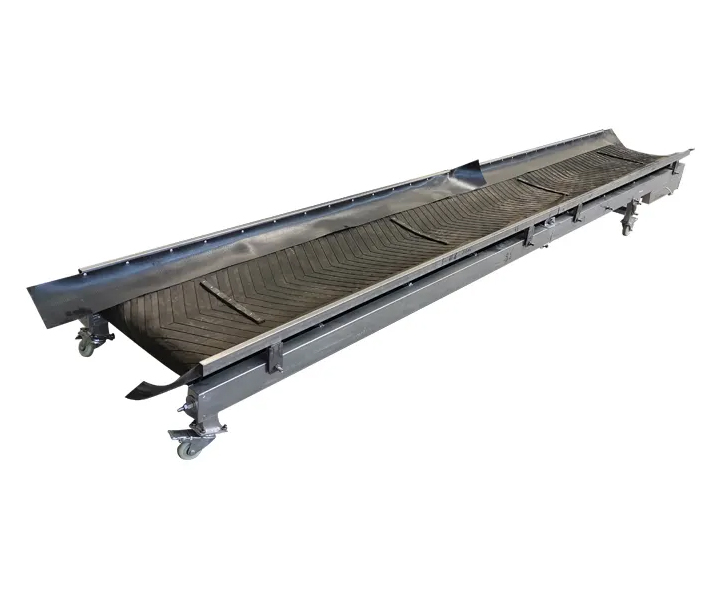
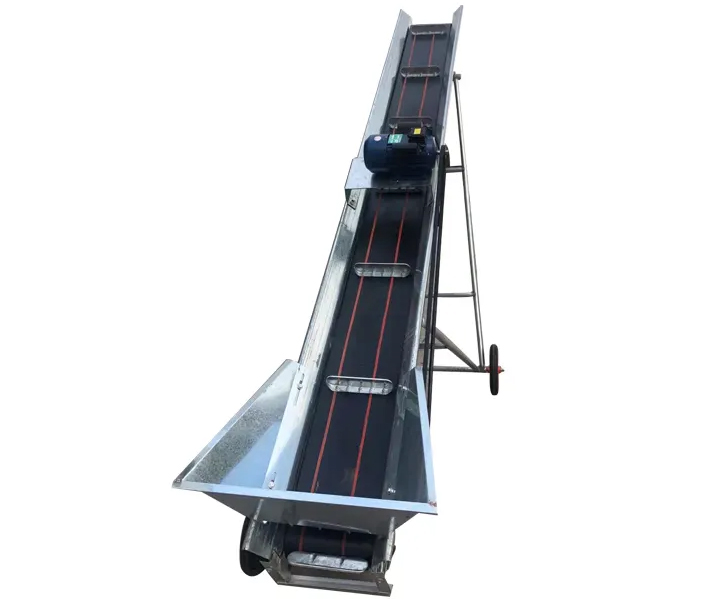
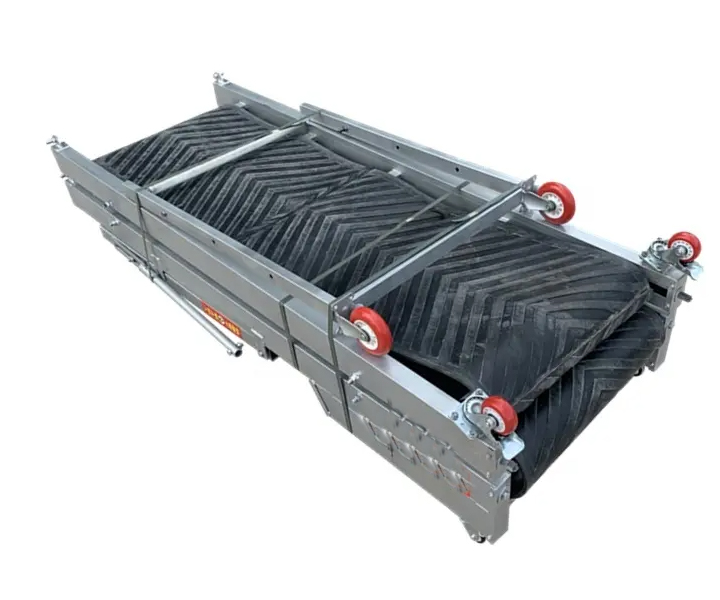
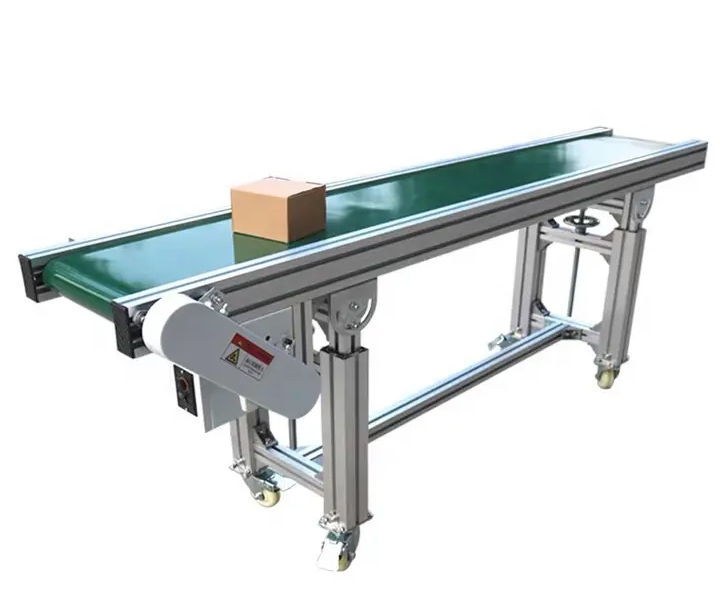
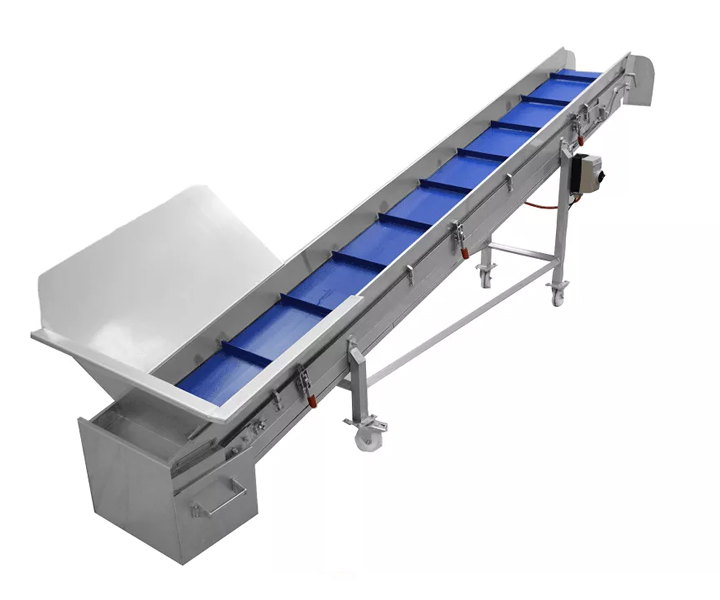





Provides a reliable and efficient way to transport small or light products or materials from one point to another.
![]()
![]()
Price:$300.00-$1,000.00/Set
Consult now and enjoy a 10% discount
Belt width: 60-200mm
Conveying speed: 1.25-2m/s
Conveying length: 5 meters
Climbing angle: 0°-90°
Belt material: PVC/PU rubber
Frame Material: Carbon Steel/Stainless Steel
Application: Used to transport small or light products or materials from one point to another. They are commonly used in a variety of industries including manufacturing, packaging and logistics.
Commitment:Free
Small belt conveyors, also called mini belt conveyors. It is a kind of light conveying equipment and offer small conveyor belts with a width of 60 to 200 mm and a length of 520 to 1500 mm.It is usually used for short-distance material transportation, such as factories, warehouses and other places. It consists of a conveyor belt, driving device, support frame, etc., and is suitable for continuous transportation of lightweight materials to improve production efficiency.
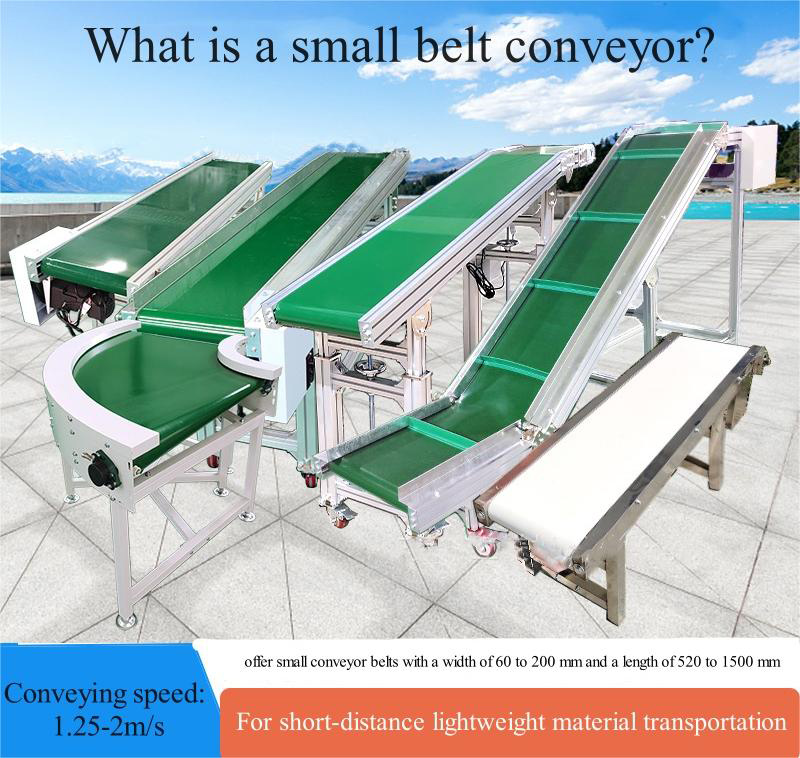
The compact and easy-to-install design of the small belt conveyor is ideal for use in environments with limited space. They can be customized to suit a wide range of applications and are available in a variety of lengths, widths and strap materials to suit different products or materials.
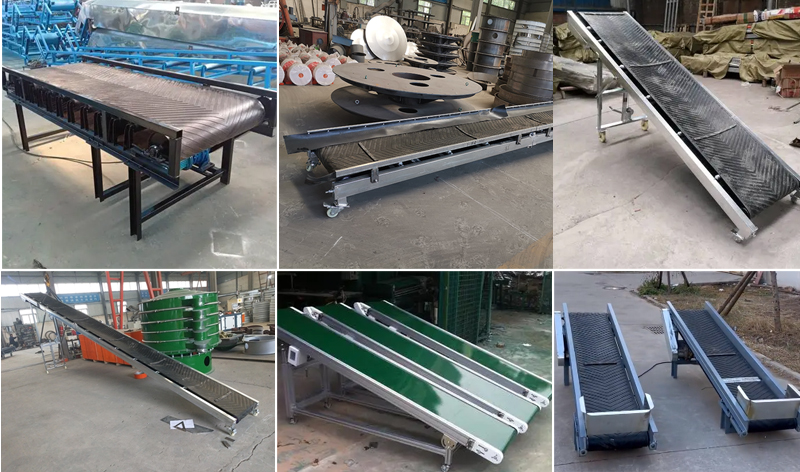
Belt conveyors of different materials are suitable for different types of products or materials. The following are some common materials and the products or materials they are suitable for:
Rubber belt conveyor: It has good friction resistance and elasticity, and is mainly used to convey small products or materials, such as food, packaged items, paper, etc.
Plastic belt conveyor: It has good wear resistance and corrosion resistance, and can convey products or materials with smooth surfaces, such as plastic bottles, plastic particles, glass bottles, etc.
PVC belt conveyor: It is a food-grade hygienic conveyor that can be used in food production to ensure food safety and no pollution.
Small belt conveyors usually consist of the following main components:
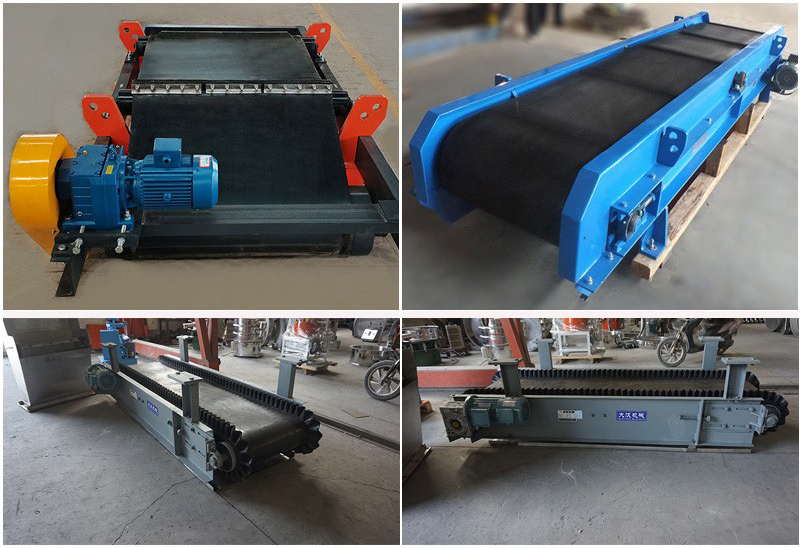
Belt: The belt is the core component of the belt conveyor and is used to transport materials
Drive device: The drive device is used to drive the operation of the belt, usually including motors, reducers, pulleys and other components.
Drum: The drum is used to support and guide the operation of the belt, usually divided into driving drum and driven drum.
Idle roller: The idler roller is located at the bottom of the belt conveyor, used to support and guide the operation of the belt and reduce friction resistance.
Support structure: The support structure is used to support the frame of the entire belt conveyor to ensure stable operation of the equipment.
Small belt conveyors are small belt conveyors designed to transport small or light products or materials from one point to another. They are commonly used in a variety of industries including manufacturing, packaging and logistics. Here are some application examples for small belt conveyors:
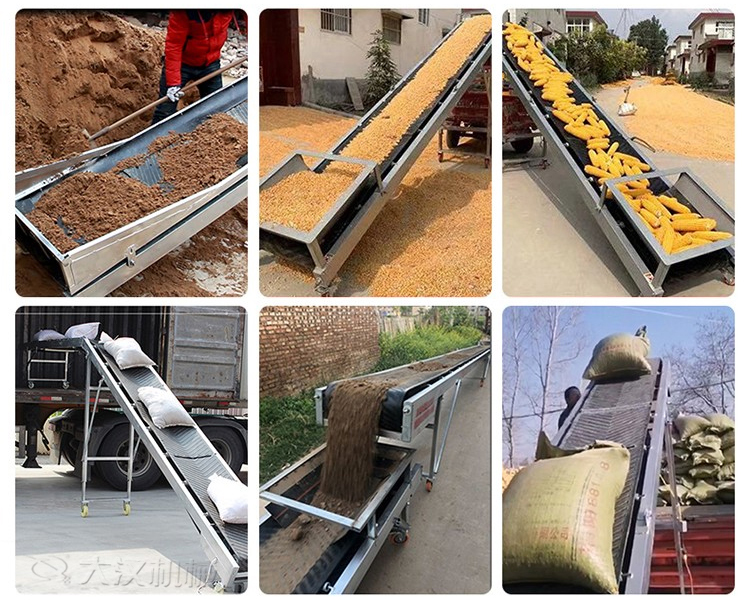
Electronics Industry: Typically used in the electronics industry to transport small electronic components between different stages of the production process.
Medical Industry: Used in the medical industry to transport small medical instruments or equipment between different workstations, or to move products through inspection or testing processes.
Packaging industry: Transporting small packages or containers from filling stations to packaging machines, or sorting products into different packages.
Retail Industry: Used in retail environments to transport small products or packages from storage areas to points of sale.
Food Industry: Used in the food industry to transport small food items or ingredients between different stages of the production process, or to move products for packaging and distribution.
Working principle of small belt conveyor is that it is driven by an electric motor to circulate the conveyor belt, thereby continuously moving materials along the conveyor line. The electric motor transmits power to the conveyor belt through the transmission device to keep it running. The materials are placed on the conveyor belt, and as the conveyor belt moves, the materials are smoothly transported to the destination. The design of the conveyor belt keeps materials stable during transportation and avoids accumulation or falling. By adjusting the speed and direction of the conveyor belt, the transportation needs of different materials can be achieved.
Small Belt Conveyor for Wood Chips
Small Portable Conveyor Belt
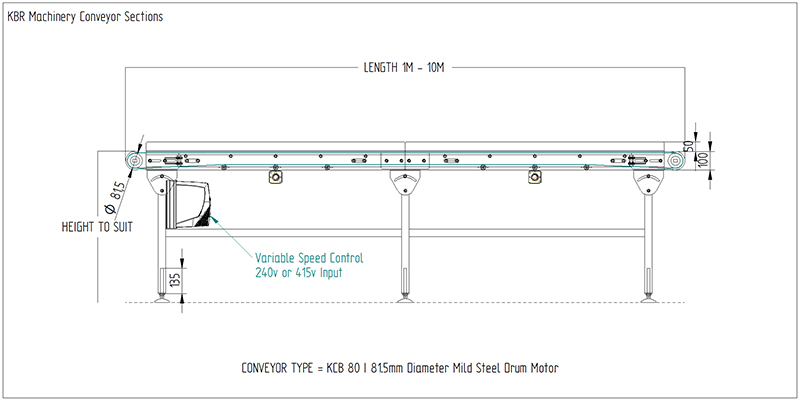
The size of the small belt conveyor will vary according to the specific application requirements, and the appropriate size can be selected according to the size and weight of the product or material. Here are some common size ranges for small belt conveyors:
Length: Generally speaking, the length of small belt conveyors can range from tens of centimeters to several meters, depending on specific application requirements.
Width: The width of a small belt conveyor is usually between 10 cm and 50 cm, depending on the size and weight of the product or material.
Height: The height of the small belt conveyor can be determined according to specific application requirements, generally between tens of centimeters and one meter.
It should be noted that the size of the small belt conveyor should match the size of the production line or workstation to ensure that the equipment can be installed and operated smoothly. In addition, factors such as the load capacity and working
speed of the equipment should also be considered to ensure that the equipment can meet the specific application requirements.
Efficient material handling
Provides an efficient and reliable way to transport small or light products or materials from one point to another, which helps increase productivity and reduce labor costs.
Small delivery volume
Small conveyor belts are available in widths from 60 to 200 mm and lengths from 520 to 1500 mm.
Compact design
The compact design takes up minimal space, making it ideal for use in environments with limited space.
Low maintenance cost
Typically low maintenance, requiring only regular cleaning and inspection to ensure proper functioning.
Cost-effective
A cost-effective solution for transporting small or lightweight products or materials, helping to reduce overall production costs.
Improve security
It can help increase workplace safety by reducing the need to manually move products or materials, thereby helping to prevent workplace injuries.
| Model | Length | hight | Power |
| B500 | 3-10m | 1-4m | 0.75-1.1KW |
| B600 | 3-10m | 1-4m | 0.75-1.1KW |
| B800 | 4-10m | 1.5-4m | 1.1-2.2KW |
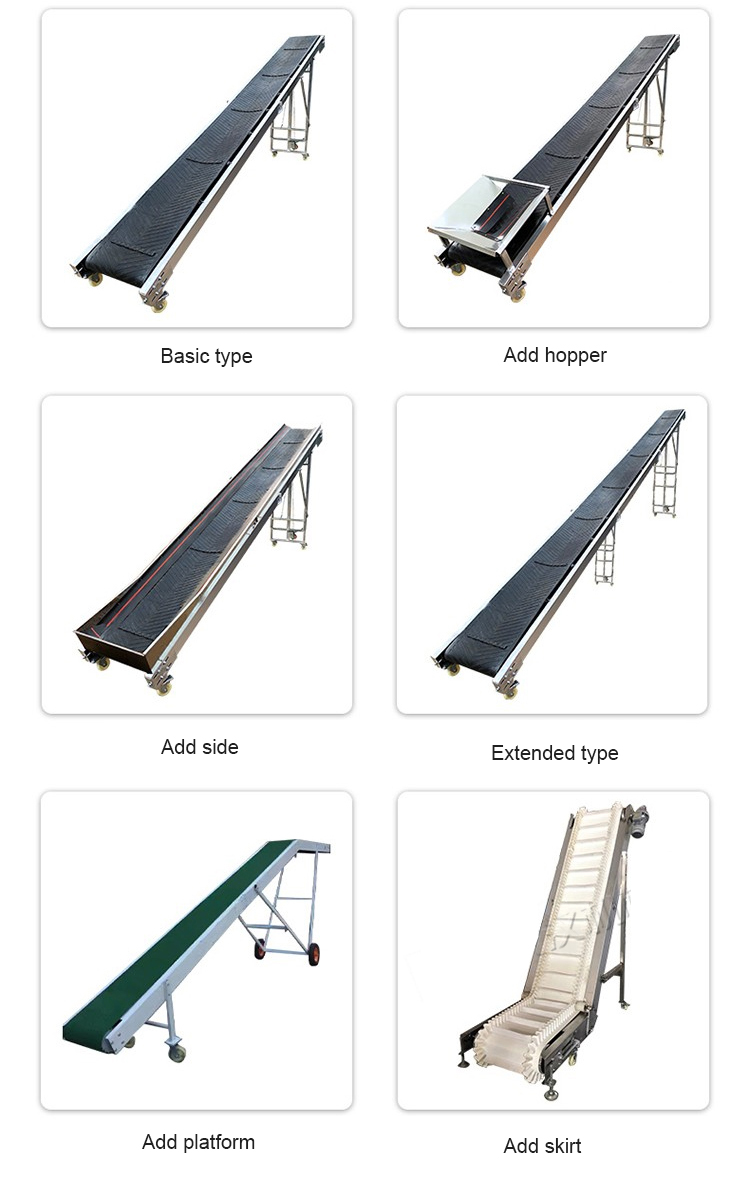
Small belt conveyors can be customized in a number of ways to meet specific application requirements. Here are some special customizations available for small belt conveyors:
Belt Material: Small Belt Conveyors can be customized with different types of belt materials such as PVC, Polyurethane or Rubber according to specific application requirements.
Belt width and length: Small belt conveyors can be customized with different belt widths and lengths to accommodate different product or material sizes and volumes.
Drive system: Small belt conveyors can be customized with different types of drive systems, including electric, hydraulic or pneumatic, according to specific application requirements.
Speed Control: Small belt conveyors can be equipped with a speed control system that enables the operator to adjust the speed of the conveyor to meet the specific needs of the application.
Incline and Decline: Small belt conveyors can be customized with incline or decline sections to accommodate changes in elevation within a production line or workstation.
Side Guides: Small belt conveyors can be equipped with side guides to help keep products or materials on the conveyor and prevent them from falling.
Conveyor Mounts: Small Belt Conveyors can be customized with different types of conveyor mounts, including floor-mounted, ceiling-mounted, or portable mounts, according to specific application requirements.
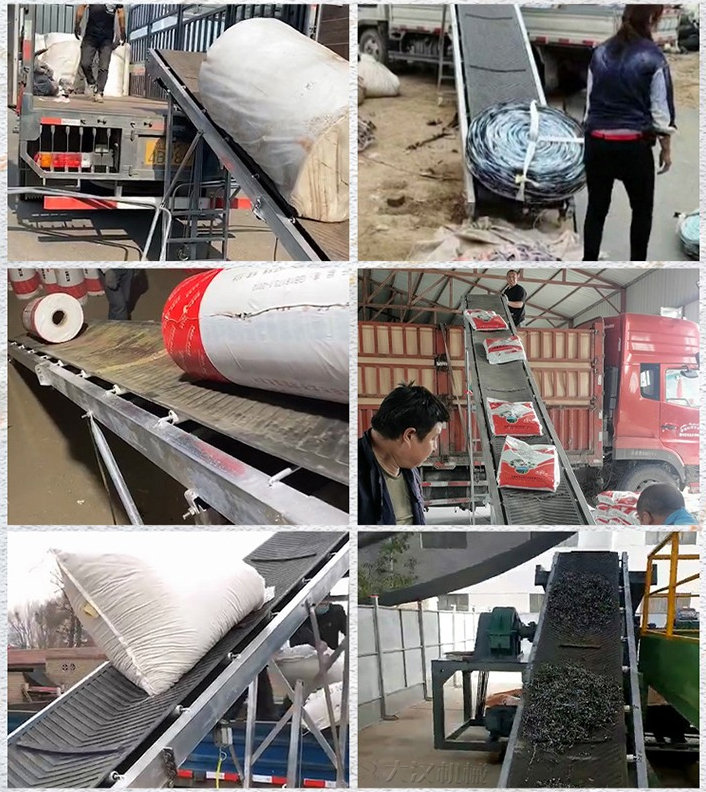
The following are several scenarios when customers use belt conveyors:
Cargo transportation: With an inclination angle of 45°, products from logistics storage centers, freight stations, and shipping terminals can be easily transported to vehicles.
Grain transportation: Bag-packed grain is collected and transferred to another storage point using a belt conveyor.
Fertilizer transportation: Bag-packed fertilizer transportation. In agricultural work, grains need to be fertilized. The belt conveyor transports fertilizer particles to the designated location, saving manual handling.
Chemical raw material production and transportation: Chemical raw materials are needed in the production of chemical materials. Belt conveyors are used to transport them to processing equipment. The inclination angle can be adjusted at will.
(1)What's capacity?
(2)How long you need conveying distance?
(3)What’s material you need conveying?
(4)What’s max inclined angle?
Tell me those data, we can help you choose the best belt conveyor for you.
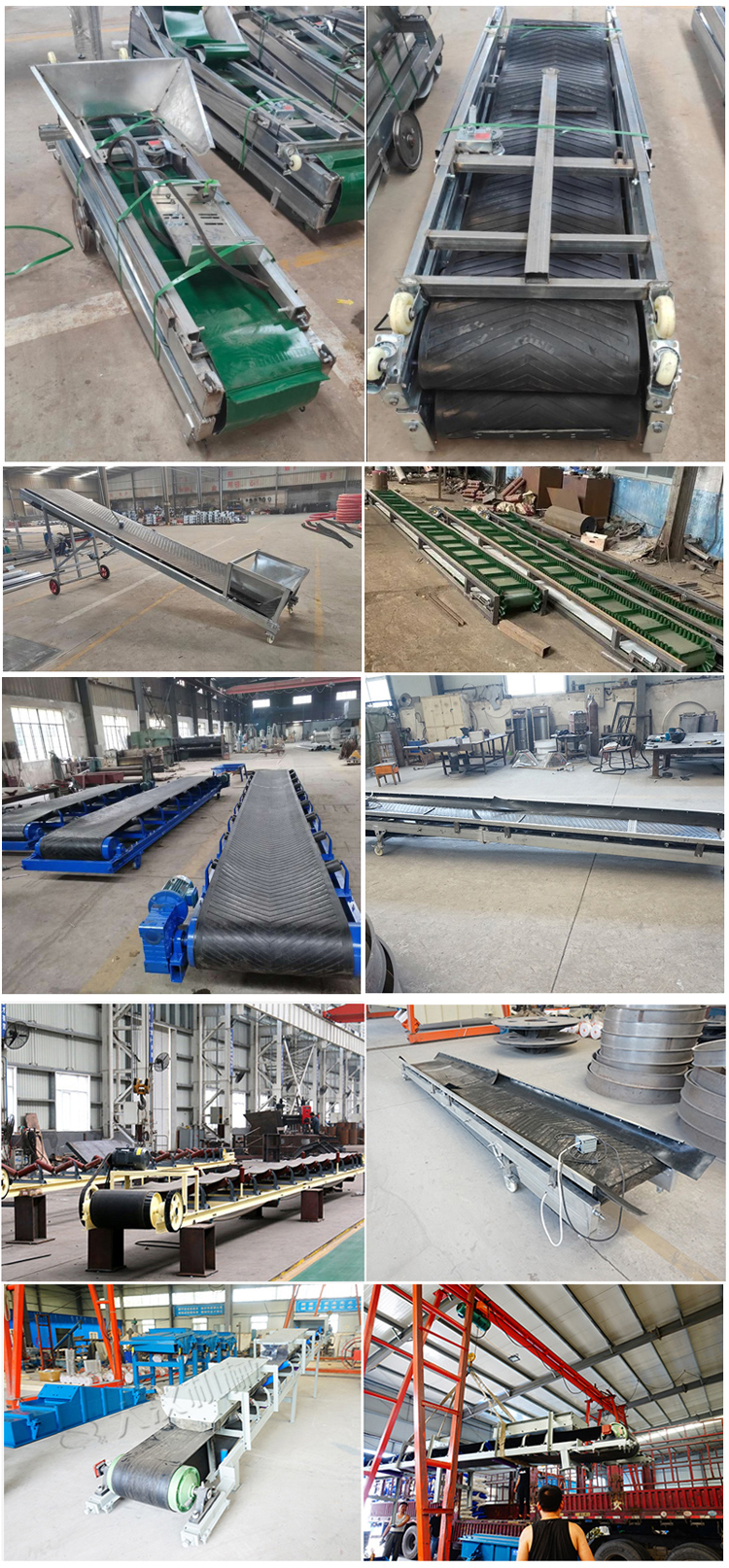
As a manufacturer of small belt conveyors, we are committed to providing high-quality and efficient conveying solutions to meet customers' material conveying needs in various industries. We use high-quality rubber, PVC or other wear-resistant materials to manufacture belts to ensure that they have good wear resistance and tensile resistance, suitable for long-term, high-intensity working environments. We have a professional production team and advanced production equipment to ensure the exquisite manufacturing process of small belt conveyors and the stable and reliable quality of each conveyor. We provide customized small belt conveyors, including different sizes, shapes, drive modes, etc. to meet the personalized needs of customers. The price is generally $300.00-$1,000.00/Set. If you have any needs or questions about small belt conveyors, please feel free to contact us and we will wholeheartedly provide you with the best solution.
Address:China,Yanjin county forest park gate to the west 1000 meters north road.